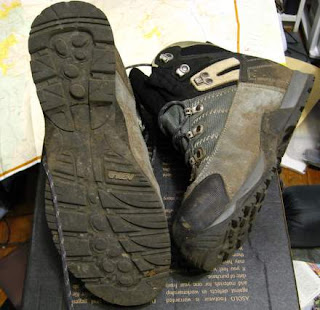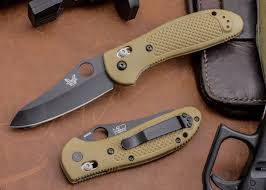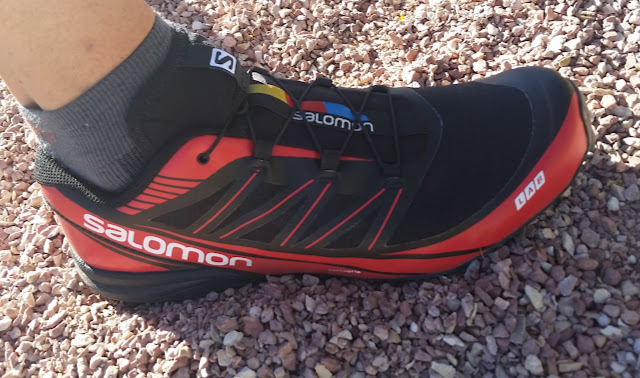High Speed Low Drag
Gear reviews, trip reports, and opinions…relating to lightweight, outdoor pursuits.
Monday, December 26, 2016
Gear Review: Princeton Tec Vizz Headlamp
This will be brief! You can find this light for as low as $25, and for that, its worth it. It does a great job of throwing lots of light and has a red mode. Caution: Surprisingly, Princeton still hasn't resolved their issue with bad circuitry. Batteries die prematurely. Major downer.
Thursday, December 22, 2016
Salomon S-Lab Fellcross 3
Gear Review: Salomon S-Lab Fellcross 3
If I had to pick *just one trail shoe* to run in, it would be this Salomon Fellcross. Its not everything, but it does everything well. Lightweight yet very well made, aggressive traction in an almost zero-drop shoe. The formula for speed and control. This is a fellcross shoe, meaning its designed for steep, soft, and wet hillsides (yes, sometimes rocky) of Europe.
So what's this fellcross shoe doing with me here in dry Colorado? For the most part, retailers here refuse to carry such a shoe. I've found that the deep aggressive lugs perform quite well on our Colorado scree (gravel), found here local and on most mountains. Important note: One needs to stay conscious that tall aggressive lugs pose a trip hazard when covering rocks and bounding over obstacles. This is far from your typical minimalist trail shoe.
With the fall of shoemaker Inov-8, Salomon (S-Lab) seems to be the only choice in a true technical-race trail shoe. The Salomon Fellcross 3 is now being offered under Salomon's lineup as the Salomon 'Speed' and 'Speed Pro'.
Salomon S-Lab Fellcross 3
$129 online retailers
Salomon S-Lab Speed
$100-179 online retailers
If I had to pick *just one trail shoe* to run in, it would be this Salomon Fellcross. Its not everything, but it does everything well. Lightweight yet very well made, aggressive traction in an almost zero-drop shoe. The formula for speed and control. This is a fellcross shoe, meaning its designed for steep, soft, and wet hillsides (yes, sometimes rocky) of Europe.
With the fall of shoemaker Inov-8, Salomon (S-Lab) seems to be the only choice in a true technical-race trail shoe. The Salomon Fellcross 3 is now being offered under Salomon's lineup as the Salomon 'Speed' and 'Speed Pro'.
Salomon S-Lab Fellcross 3
$129 online retailers
Salomon S-Lab Speed
$100-179 online retailers
My New Favorite Pants-Prana's Bronson Pant
Prana's Bronson Pant
Prana finally got my attention last summer with their stretch Zion shorts. For me, as close to a perfect adventure/everyday shorts as I have found thus far.Looking for pants this fall, I looked at a few from Prana. Prana's Bronson pant appeared to be a good but simple looking colored denim, suitable for the casual office and the brewery. Off the rack, the pant is uber soft, relatively light, with a comfortable cut. The soft and comfy feel comes in part from a 98/2 percent split of organic cotton and elastane (spandex). I had no idea at the time that I was wearing a stretch jean (technically this not a denim).
With the exception of pure synthetic hiking pants, I never hike in pants, jeans, etc. I found myself hiking in the Prana Bronson last week, and they were very comfortable. Unbeknownst to me during the hike, the Bronson pant features a full running inseam gusset, allowing for full mobility on the steep climbs and funky traverses.
The one immediate hit on the pants is the 5th pocket on side. Its opening is too small for a phone yet too big for a knife. Seems to be there for style only. Triple stitching and double rear belt loops are very much appreciated details.
Comfortable, well made, and priced right.
Prana Bronson Pant for men, $75.
Tuesday, October 28, 2014
Gear Review: Asolo Fugitive GTX Hiking Boot
When someone mentions hiking or backpacking, I have to think most of us think hiking boots. While you may not be familiar with the name, the Asolo Fugitive GTX is a boot that you have probably seen somewhere already.

This boot takes some hits from hardcore critics for its flashy good looks and for not being a "real mountaineering" boot. Well, no such words from me thus far. The boot is not marketed as a mountaineering boot and is not crampon ready. This boot breaks in crazy fast and I've found it to be uber comfortable within 24 hours out of the box. Great boots including this one, are made in Europe. Initial inspection of materials and craftsmanship are all top notch here. The heel to toe drop is lower than the usual hiking boot, especially for one in this more rigid class. Most will find this profile more comfortable. This boot is ideal for medium volume feet and is setup to accommodate several lacing options. Ive been wearing a Scapra boot for many years, so in comparison the Asolo Fugitive does not have the precise technical feel.
The Fugitive does not have the almost-to-toe lacing but has a large and very comfortable toe box. The toe box allows the toes to spread, relieving pressure under the ball of the foot, and reduces overall foot fatigue.

An extended test under a variety of conditions proved the materials and craftsmanship in the Fugitive to be top shelf. The fugitive is best placed for heavy hiking and backpacking where a more technical boot is not needed. I'd like to see a more aggressive outsole with namebrand rubber to match the very well built boot upper.
This Asolo Fugitve GTX is a very smart buy in the company of $200 hiking boots.
Gear Review:
Inov-8 Roclite 245 Trail Runner
Invov-8’s shoe line was born from Europe’s fell running.
Running off road and off trail in rugged terrain consisting of deep grass, mud,
and rocks. For many years this shoe line was known only by a small number of
trail runners and racers. Inov-8 had a
unique niche with low-profile lightweight yet very rugged and aggressive race-ready shoes. An
example of this is found in a review of mine on the Inov-8 Flyrock.
Today, Inov-8s are seen mostly indoors at gyms and cross-fit
locations with their F series training/cross-fit shoes. Unfortunately the
company has shifted its direction away from building solid trail shoes. At the
same time, almost all other manufactures have flooded the market with low
profile trail shoes.
The Inov-8 Roclite 245 is easily the worst piece of footwear
I have ever worn. This from a once hardcore Inov-8 fan. This shoe has
absolutely nothing in common with the previous Roclite shoe series. Design or
materials. This is really a slipper, not a shoe. The shoe upper is entirely of
light mesh with the overlays being aesthetic only, offering no stability. The
sole consists of a single piece of rubber with no midsole. A sloppy tongue, bad
lacing, and a poorly made toe rand made this shoe of no use to me. You may find
that the winner of the 2014 Pikes Peak Ascent ran to victory in this shoe…but it’s
a fact that seems to have no real weight.
This is a terrible terrible shoe at any price point. Inov-8
should be ashamed.
Tuesday, January 28, 2014
Gear Review: Suunto Core Wrist Watch
Let’s be honest gents, a wrist watch is more an item of
jewelry these days than a functional timepiece as it once was. We have the time
and so much more on our phones, computing devices, and in our car. You may
think your black clad military looking watch sets you apart from the stainless
Rolex dive watches, but it doesn’t. Yep, still jewelry.
One such watch is the black clad Suunto Core. Suunto wrist
watches are a familiar site on just about any adventure, along with a few other
similar watches such as the Casio Pathfinder. These watches are in a category
called ABC (A=Altitude B=Barometer C=Compass) and are also referred to as
wristop computers. Suunto released the Core watch back in 2007 and there have
been 25 different versions since. All of them have the same functions, just
cosmetic differences such as wrist strap and bezel.
Featured here is the Suunto Core Classic. Entirely black,
plastic moving bezel, and elastomer wrist strap. The only noteworthy
improvement over the years with the Core Classic, is the switch from a painted
metal bezel to a plastic one. I have to think the metal bezel will hold up
better under abuse, but the black plastic holds its good looks over time.
Remember, with watches it’s all about presentation and perception. Jewelry.
For me, the Suunto Core’s simple looks make its operation
both visually and instinctively pleasant to use. Toggling through modes such as
compass, altimeter, and time options, with a touch of button. Entering a menu
tree with a simple long press of the same button. On screen ques make button
and option selections idiot proof. The Core’s chassis and face is relatively
low profile and combined with a well thought wrist strap, fits and stays put. A
nice touch, the wrist strap keeper fits positively into the wrist strap,
preventing movement readjustment and tinkering.
As cool as the black on black scheme looks, it makes reading
the watch more difficult than I anticipated. I expected a better contrast
adjustment. I was hoping for more brightness and contrast after replacing the
battery, no love. Using the watch here in Colorado, the altimeter is the
biggest disappointment. With Colorado’s ever-changing weather, the barometric
based altimeter is consistently off by thousands of feet. There is an option to
plug in altitude reference points during each new adventure, but I’m not that
geeked-up.
All in all this is a well-made watch and priced
appropriately. The Core series lacks real ruggedness and for that it belongs in
town and not in the field. Suunto however does make it’s Vector series, a
rugged multi-function watch which will hold up to some abuse on any adventure.
Suunto Core
$299
Sunnto Vector
$199
Wednesday, January 8, 2014
Stupid Gear Award:
Lock-back Safety Knives (LBS)
STUPID: A lock-back mechanism prevents the knife from *closing*,
not opening. It assures you that the knife blade won’t close on your fingers
while using it…in the event that there is pressure put on the back of the
blade. I can’t think of any scenario where there is pressure on the back of
blade, but regardless the lock-back secures the blade and makes it rigid during
extreme uses.
A lock-back mechanism prevents the knife from *closing*,
not opening. It assures you that the knife blade won’t close on your fingers
while using it…in the event that there is pressure put on the back of the
blade. I can’t think of any scenario where there is pressure on the back of
blade, but regardless the lock-back secures the blade and makes it rigid during
extreme uses.
Lock-back Safety Knives (LBS)
This is currently my favorite overall design/idea to pick
on, the lock-back safety, or ‘LBS’. Where did the idea spawn from? Is there a
rash of knife lock-back failures?! I have to think this is a gimmick to sell
knives to the not-so-knife-like folk. What a terrible feature and design. Most
people, especially those unfamiliar with knives, have a hard enough time
working the normal lock-back, let alone a second mechanism simultaneously.


Most of us have a knife for one use or more. Basic utility,
camping, hunting, even personal defense. Hopefully you’ve chosen a name brand
knife, feel confident using it, and keep it clean and sharp. If you have a single
blade folding knife, it most likely has a locking blade. Meaning you have to
push a spring in some way to close it, once opened fully. Most newer knives
have gone to a breach style side to side lock, verse the rear button lock.
Jump back for a moment. For myself and other Mid-westerners like me, there’s a tradition of a father or grandfather passing down a pocket
knife, your first knife. Possibly a Case, Buck, or Swiss Army knife. Due to the
age, this pocket knife typically had more than one blade and had no lock-back
feature. As it was passed down, you were given brief instructions on using the
knife, whittling, always cutting away from yourself, etc. A kid’s second knife
was a step up, bigger, and more up to date, having a locking blade for more
confident and versatile use (cutting, skinning, stabbing).
Insert present day folding knives. Assuming you've spent
more than $20, you have a reasonable knife with a locking blade and material such
as 440 Stainless steel. The knife has one of the two styles of locking
mechanisms mentioned and possibly even a lock-back safety. Any knife in this “reasonable”
category has more than a sufficient lock mechanism and one that has been
torture tested by the manufacturer.
STUPID:
 A lock-back mechanism prevents the knife from *closing*,
not opening. It assures you that the knife blade won’t close on your fingers
while using it…in the event that there is pressure put on the back of the
blade. I can’t think of any scenario where there is pressure on the back of
blade, but regardless the lock-back secures the blade and makes it rigid during
extreme uses.
A lock-back mechanism prevents the knife from *closing*,
not opening. It assures you that the knife blade won’t close on your fingers
while using it…in the event that there is pressure put on the back of the
blade. I can’t think of any scenario where there is pressure on the back of
blade, but regardless the lock-back secures the blade and makes it rigid during
extreme uses.
The LBS. Engineering a safety mechanism on top of an already
existing and proven safety is mind boggling. Worse, this new safety design doesn’t
do what’s actually needed…that is, keeping the knife from *opening*! Our
knives are found everywhere, rattling in a glove box, junk drawer, in a backpack,
on a climbing harness, etc. For me, on several occasions, I have reached for my
knife and found that it was opened halfway while being jostled or collided
with. Folding knives overall are prone to opening by design, not closing. This
new LBS design doesn't address this condition at all. #AssBackwards
Subscribe to:
Posts (Atom)







